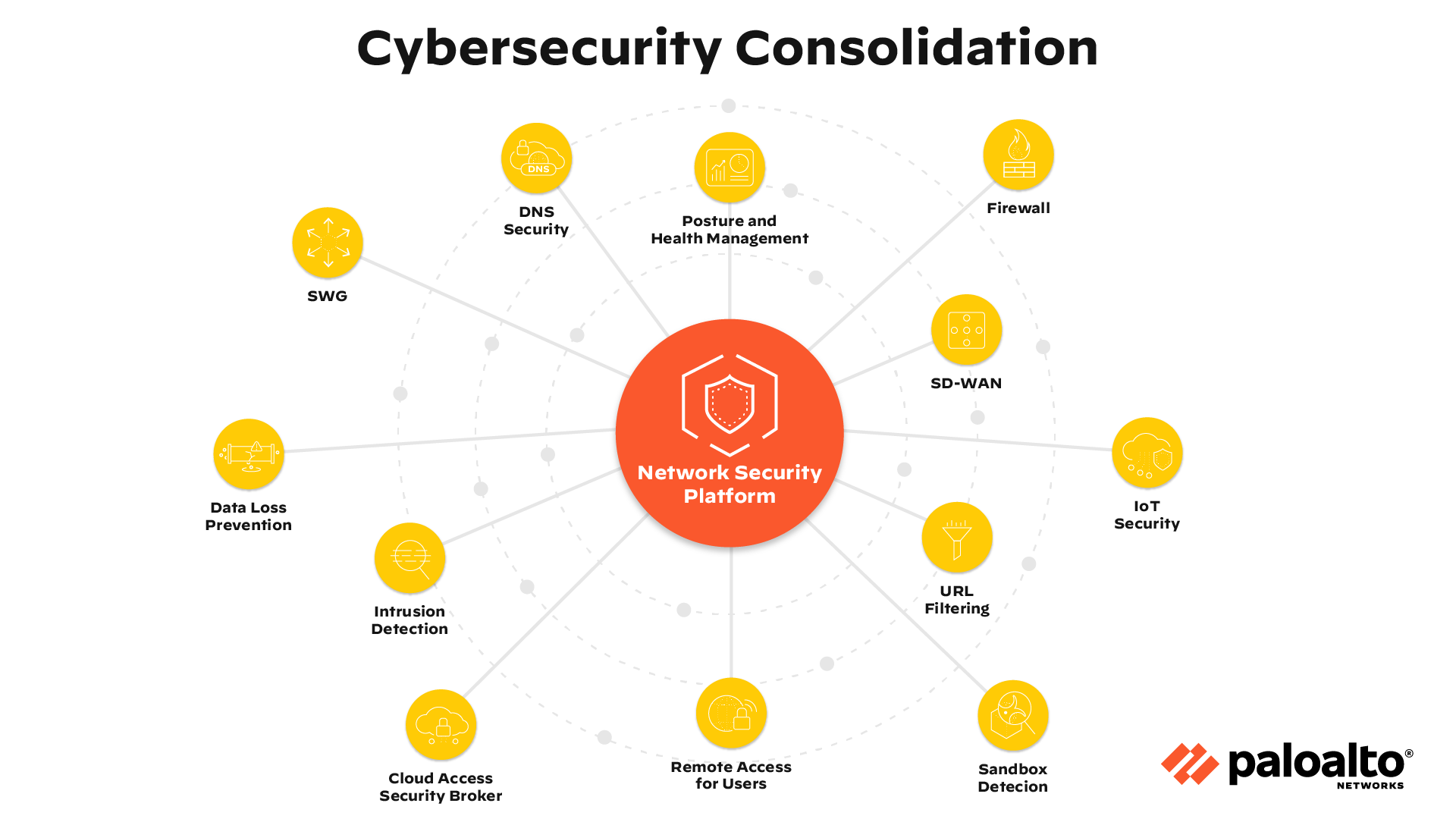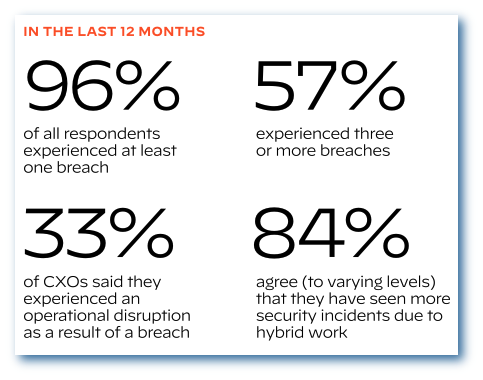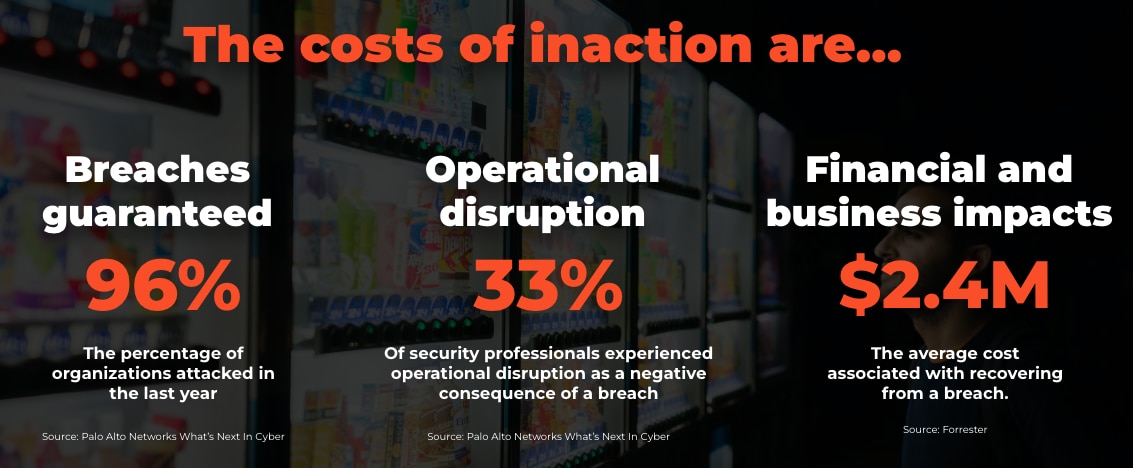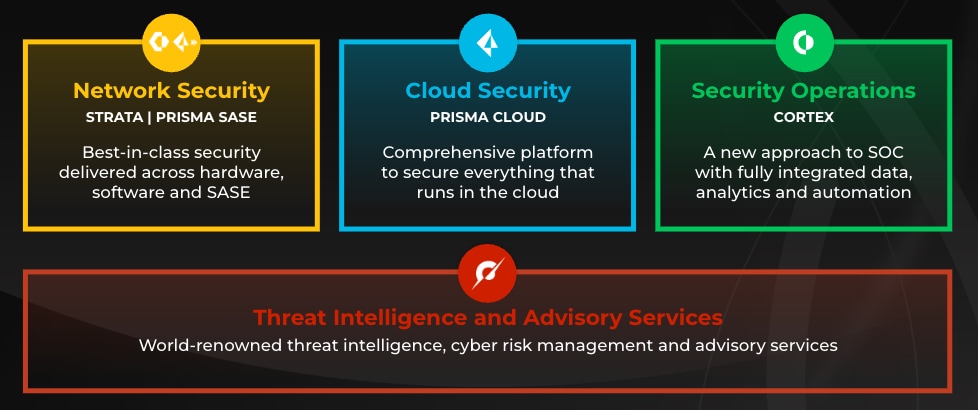This post is also available in: 简体中文 (Chinese (Simplified)) 繁體中文 (Chinese (Traditional)) 日本語 (Japanese) 한국어 (Korean)
Global organizations face two major security challenges in today’s business climate: digital transformation and macroeconomic conditions.
Let’s address digital transformation. The past three years saw massive cloud IT investments and expansions, with organizations adopting large-scale remote and hybrid work to support business continuity. Cloud-based applications, devices and endpoints are more connected than ever. And as a result, organizations have a rapidly-expanding attack surface that opens them up to more cyber threats.
At the same time, economic uncertainty means that organizations are now tightening their purse strings – from scaled-back IT spending to re-evaluating current security tech stacks. Chief information security officers (CISOs) and security teams need solutions that reduce IT footprints while enhancing risk posture. In other words, solutions can do more with less.
So how can leaders defend against the evolving threat landscape while simplifying their security stack? Let’s look at cybersecurity consolidation.
What Is Cybersecurity Consolidation?
Today’s cyber threats occur with more frequency and severity than in previous years. According to our global pulse survey of 1,300 C-Suite leaders in What’s Next in Cyber 2022, 96% of CXOs experienced at least one breach in the past year. The latest attacks target vulnerabilities in different networks, clouds and endpoints. They use tools like AI to bypass traditional cyber defenses used by organizations.
The usual reaction by security teams is to review and add products across the entire security spectrum – intrusion prevention, anti-malware, DNS security, WAF and more. Unfortunately, these point products seldom work together. Products from different vendors use different datasets, contexts, logging conventions and UIs, creating gaps and complexities in your security posture.

Cybersecurity consolidation combines multiple, siloed security functions into security platforms that manage your business risks by protecting your entire IT environment.
For example, organizations that use separate tools, such as intrusion prevention, anti-malware, DNS security and URL filtering, can choose a consolidated platform that provides these protections together. The platform leverages shared intelligence to share information seamlessly across the platform, covering security gaps and giving teams the data and tools to respond faster to threats.
What Are the Benefits of Cybersecurity Consolidation?
1. Supercharge Risk Posture
The volume of mission-critical information for security analysts is reaching a tipping point. Today’s threats use AI and automation to overwhelm defenders and exponentially increase response times. The information overload is simply too vast for security teams to handle manually.
A consolidated platform enhances risk posture by collectively sharing intelligence to prevent zero-day threats in real time. Tools share data points, dashboards and user experiences. They provide SOCs with a complete picture of their security posture. When every part of your cyber stack works together, they offer significantly better security.
Consolidated platforms also offer a single dashboard that provides visibility across all endpoints in your architecture. Security teams can access vital information, such as metrics and response times, from one location and reduce manual data sorting for security analysts.
2. Reduce Security Complexity
Large organizations employ 31.5 cybersecurity tools on average. That’s a lot of time, money and talent spent on managing the entire architecture. Add procuring and deploying future tools and vendors to the mix, as well as the additional training needed for security teams and users every time, and the security sprawl grows exponentially.
A consolidated platform reduces the number of vendors by integrating multiple tools and services, delivering them as a single, unified solution. From maintenance to software updates, to threat responses, all critical management requirements are fulfilled by a single vendor. The result is a highly-scalable cyber infrastructure without needing additional resources.
3. Automate Security
In cybersecurity, speed is critical to detecting and mitigating threats. But, today’s attacks overwhelm SOCs by using automation to target security gaps and silos. Analysts can spend days, weeks and even months chasing down false positives that lead nowhere. This means less time to spend on larger security projects and more opportunities for serious breaches.
Consolidated platforms leverage data across their systems to accelerate identification and response times. Platforms provide mission-critical data that give SOCs deeper actionable insights into threats, reducing manual workloads significantly. Security teams have more time to focus on larger threats, and organizations enjoy a much stronger security posture.
Why Should You Consolidate Your Security Now?
Cyber attacks on enterprises are growing in frequency and severity. Global cyber attacks increased by 38% in 2022, and business leaders are feeling the impact, according to our What’s Next in Cyber 2022 report on 1,300 C-suite leaders:

Almost every leader surveyed had experienced a breach, with over half experiencing three or more. And, the costs of inaction are high.

This doesn’t include the damages to a reputation or regulatory compliance penalties that organizations incur when breaches happen. In fact, cyber attacks are at risk of becoming “uninsurable” as more organizations are impacted every year.
So where do you start with security consolidation? Here are three strategic areas to consider:
1. Managing Cyber Risks in Complex, Borderless Environments
Securing across multiple clouds, data centers, hybrid locations and employees who connect from everywhere (both managed and unmanaged) is especially challenging. Multicloud networks are often overly permissive and depend on external-facing firewalls for protection, ignoring possible risks originating from within and enabling lateral threat movement. Further more, many traditional security tools are architected for on-premise environments. When extended or retrofitted to the cloud, they leave gaps that allow for excessive privileged access and permissions.
Enterprises with complex, multi-cloud environments should look for a provider that offers an end-to-end Zero Trust strategy. You want a provider that understands your network’s most critical data, assets, applications and services. They should apply those principles across all users, applications and infrastructure.
2. Maximizing Security Efficacy and Operational Efficiency
CISOs today face the unrelenting challenge of staying on top of cyberthreats while minimizing costs. After all, many business leaders still view cybersecurity as a cost center instead of an investment.
You’ll want to look at how a provider helps you squeeze the most of every security investment. There are several key considerations when evaluating a cybersecurity provider:
- Look for integrated consoles for managing and monitoring consolidated platform(s).
- Look for the capability to automate threat response, allowing your SOC to focus on its highest-value tasks.
- Look for a vendor that minimizes the procurement process timeframe and costs, working with you to ensure a seamless transition.
3. AI-Driven Threat Detection and Response
Prevention is the gold standard for cybersecurity, but when a breach occurs, speed is everything. Security architectures built with multiple point products (mostly siloed and nonintegrated) can hinder response times significantly. Today’s human-centered SOC is inundated by siloed data, with teams taking 287 days on average to identify and contain a data breach.
To ease the burden on security analysts, organizations need a provider that elevates their cybersecurity operations with AI-driven platforms. These platforms use security data gathered across their ecosystems to speed investigations and automate manual SOC tasks, such as eliminating non essential threats.
For example, an extended detection and response (XDR) platform uses AI and machine learning to narrow down the hundreds of alerts SOCs receive every day. Analysts can then focus on the largest threats, which saves the organization time, money and personnel.
Palo Alto Networks: Your Partner for Cybersecurity Transformation
Cyber transformation is only possible when security leaders free themselves from legacy architectures. Security stacks built on point products result in gaps that leave enterprises vulnerable to attacks and ultimately cost more to resolve.
For organizations that want to simplify their security stack and maintain a best-of-breed approach, consolidation is key. Our next generation cybersecurity platforms provide end-to-end security from the data center, to the cloud, to your SOC.
Network Security – Our best-in-class Network Security Platform across hardware, software and SASE secures the hybrid workforces and complex infrastructures of today.
Cloud Security – Our comprehensive cloud-native application protection platform (CNAPP) secures DevOps from code to cloud, across multi-cloud and hybrid environments.
Endpoint Security – Our extended detection and response (XDR) platform gives SecOps complete visibility into threats for lightning-fast investigation and response.
Incident Response – Our Unit 42 retainer services become an extension of your team, gaining a thorough understanding of your complex environment, so they can respond instantly to any breach.

Whether you already use Palo Alto Networks or are still exploring options for your organization, we want to help you make an informed decision. Learn more about cybersecurity consolidation:
- Consolidation: The secret to supercharging your SOC
- Consolidation: How security platforms reduce implementation time and supercharge risk posture
Want to know more about the Palo Alto Networks portfolio of platforms? Check out our cybersecurity solutions that work even better together.